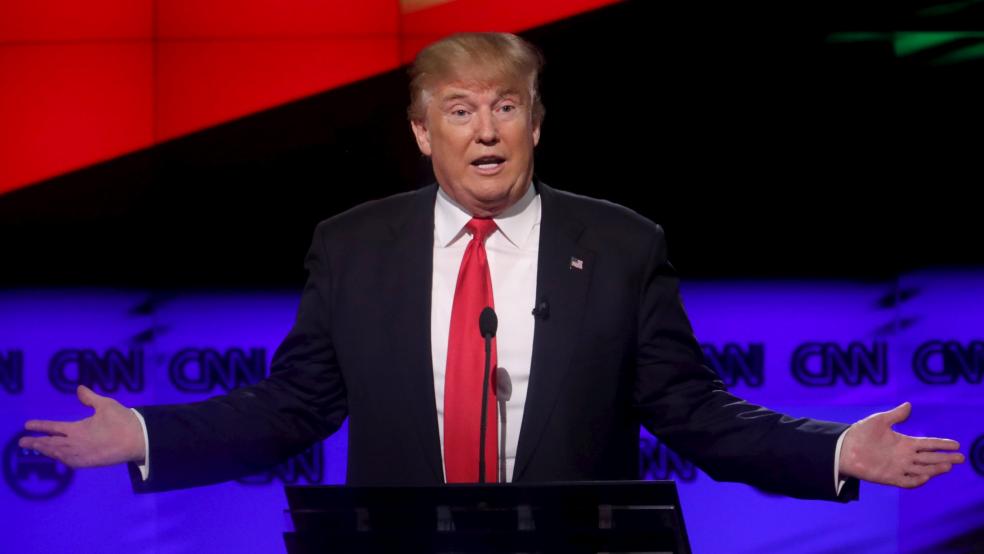For a few weeks now, the real battle in the Republican presidential primary has been between Donald Trump and delegate arithmetic. While it is still mathematically possible for Texas Sen. Ted Cruz to win enough delegates for a first ballot victory at the nominating convention in July, the likelihood is extremely low.
However, much more plausible is a scenario in which Trump, while continuing to lead the field in delegate count, is held short of the 1,237 votes he would need to secure the nomination outright. That is why the state of Wisconsin, which will award 42 delegates in its April 5 primary election, looms particularly large right now.
Related: Ex-Trump Insider – Donald Doesn’t Want to Be President
Right now, according to the Associated Press, Trump leads the field with 736 delegates, 501 short of the goal. Cruz is 273 votes behind Trump, and currently needs to win about 85 percent of the remaining delegates to clinch an outright victory.
The real worry for the non-Trump crowd is the possibility that the former reality television star might sweep the field in Wisconsin, where the rules allow for a back-door, winner-take-all allocation of delegates. The statewide winner there is awarded 15 at-large delegates and three automatic delegates. The remainder are allocated to the winners of the individual congressional districts.
A Trump sweep in Wisconsin would leave him 449 short of a guaranteed nomination. He would need to win about 54 percent of remaining delegates to clinch and would be heading into elections in a swathe of Eastern states where he is expected to do well. That would leave Cruz in the position of having to win more than 91 percent of the remaining uncommitted delegates to win outright.
However, polling in Wisconsin seems to suggest that Trump is facing an uphill battle there. The three most recent polls there, as tracked by RealClear Politics, have Cruz just ahead of the billionaire. Additionally, Cruz on Tuesday received the endorsement of Wisconsin governor and former presidential candidate Scott Walker.
Related: 10 Foreign Policy Experts Who Think Trump Could Destroy America
“Trump has shown signs of weakness in the Badger State,” wrote Kyle Kondik and Geoffrey Skelley at Sabato’s Crystal Ball. Citing research based on polling by Marquette Law School, they point out, “Trump’s favorability was much better among Republicans in the sparsely-populated northern part of the state and much worse in Milwaukee County and its surrounding counties, which could cast about a third of the total GOP votes on April 5. So maybe Trump does really well in Wisconsin’s three, large northern congressional districts while the other five are more competitive.”
The real wild card, though, is Ohio Gov. John Kasich, who has remained in the race despite having no mathematical possibility of securing more than half the delegates. Kasich is mainly seen as siphoning voters away from Cruz, thereby indirectly helping Trump.
According to Kondik and Skelley: “Here’s where the Cruz-Kasich split could really help Trump: It’s easy to imagine the two non-Trumps splitting about 60%-65% of the vote, allowing Trump to win with 35% to 40% and to capture most of the delegates.”
The bottom line on Wisconsin is that a Cruz win there would slow but not stop Trump’s relentless march toward Cleveland. It would also make it that much more difficult for Trump to get to the convention with the majority needed for a first-ballot victory.
Related: How Trump Got Outfoxed by Cruz in Louisiana
However, a dominant performance by Trump would eliminate any remaining credibility that Cruz has when he claims to have a shot at beating Trump outright. It might have the clarifying effect of forcing Cruz and Kasich to admit that their only remaining path is strategic denial of delegates to Trump through some sort of cooperation.
In the end, nobody will win or lose the nomination battle in Wisconsin next week, but the eventual outcome might look a lot clearer.





